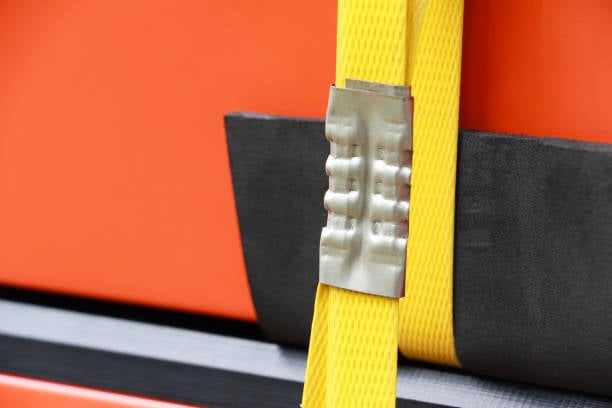What is the difference between woven and composite strapping??
When it comes to securing heavy loads for transportation or storage, strapping is an essential tool. Two popular types of strapping commonly used are woven strapping and composite strapping. While both options serve the same purpose, there are distinct differences between them. In this article, we will explore the dissimilarities between woven and composite strapping to help you make an informed decision for your strapping needs.
1. Strength and Durability
One of the primary differences between woven and composite strapping lies in their strength and durability. Woven strapping, as the name suggests, is made by weaving polyester fibers together. This weaving process gives it exceptional strength, making it suitable for heavy-duty applications. On the other hand, composite strapping is constructed by combining multiple layers of materials, such as polyester and polypropylene. This combination enhances its overall strength and durability, making it an excellent choice for securing heavy loads.
2. Elasticity
Elasticity is another aspect where woven and composite strapping differ. Due to its woven construction, woven strapping has a higher degree of elasticity. This elasticity allows it to absorb shocks and vibrations during transit, making it ideal for goods that may experience movement or shifting. Composite strapping, with its multiple layers and reinforced structure, offers less elasticity. While it still provides some level of shock absorption, it is not as flexible as woven strapping.
3. Resistance to UV Rays and Weather Conditions
When choosing strapping materials, it is important to consider their resistance to UV rays and weather conditions. Woven strapping typically has better UV resistance compared to composite strapping. The weaving process helps to enhance its ability to withstand prolonged exposure to sunlight without significant degradation. This makes it a suitable option for outdoor applications. Composite strapping, although it may have some UV resistance, generally does not perform as well as woven strapping under direct sunlight.
4. Cost-effectiveness
Cost is often a factor to consider when selecting strapping materials. Woven strapping tends to be more expensive than composite strapping. The weaving process and the use of high-quality polyester fibers contribute to its higher price point. Composite strapping, on the other hand, offers a more cost-effective solution without compromising on strength and durability. This makes it a popular choice for businesses looking for reliable strapping at a lower cost.
5. Handling and Application
Another difference between woven and composite strapping lies in their handling and application. Woven strapping can be easily tensioned and secured using buckles or metal seals. Its flexibility allows for quick and straightforward application. Composite strapping, with its multiple layers, requires special tools such as tensioners and sealers for proper application. While this may add a step to the strapping process, it ensures a secure and tight hold on the load.
6. Breaking Strength
Breaking strength refers to the maximum force a strapping material can withstand before it breaks. Woven strapping generally has a higher breaking strength compared to composite strapping. The weaving process creates a tight and interlocking structure that enhances its overall strength. Composite strapping, although strong, may have a slightly lower breaking strength due to its layered construction. However, it still provides sufficient strength for most applications.
7. Width and Thickness Options
The width and thickness of strapping can vary based on the specific requirements of the load. Woven strapping is available in a wide range of widths and thicknesses, allowing for customization based on the application. This versatility makes it suitable for securing different types of loads. Composite strapping, while also available in various sizes, may have limitations in terms of customization. The layered structure of composite strapping affects its flexibility in terms of width options.
8. Reusability
For businesses looking for reusable strapping options, woven strapping is often the preferred choice. Its durability and ability to withstand repeated use make it an environmentally friendly option. Composite strapping, although strong, may not be as easily reusable due to its layered construction and potential wear and tear during use. This is an important consideration for businesses aiming to reduce waste and minimize the need for frequent strapping replacements.
9. Safety
Both woven and composite strapping offer reliable and safe securing options. However, woven strapping's higher elasticity can provide an added safety measure by absorbing sudden impacts or movements. This can help prevent damage to the load and minimize the risk of accidents during transportation. Composite strapping, with its reinforced structure, also provides a secure hold but may not offer the same level of shock absorption as woven strapping.
10. Environmental Impact
Lastly, considering the environmental impact of strapping materials is crucial. Woven strapping, made from polyester fibers, is generally recyclable and can contribute to reducing waste. Composite strapping, due to its combination of materials, may be more challenging to recycle. However, advancements in recycling technologies continue to improve the recycling options for composite strapping, making it a more sustainable choice.

